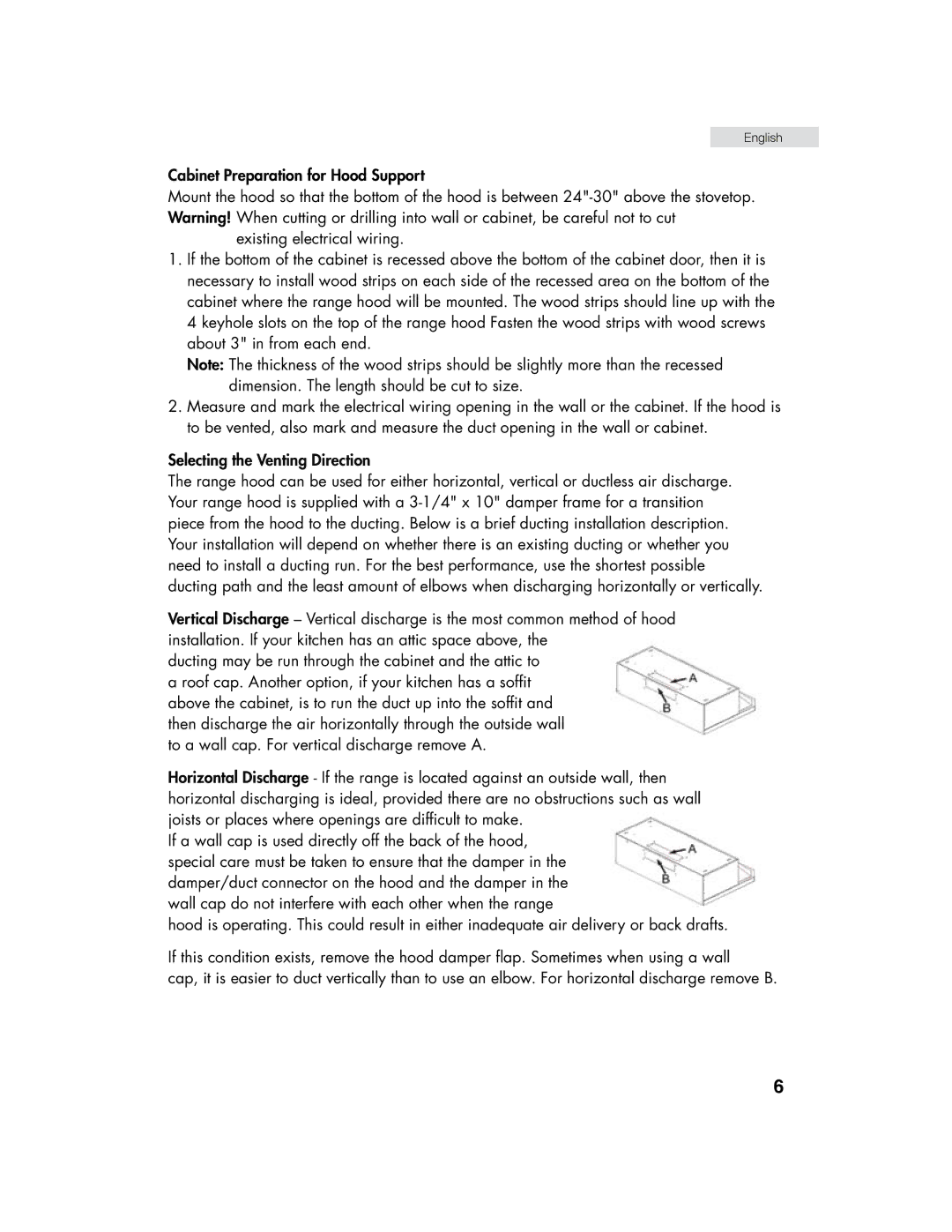
English
Cabinet Preparation for Hood Support
Mount the hood so that the bottom of the hood is between
existing electrical wiring.
1.If the bottom of the cabinet is recessed above the bottom of the cabinet door, then it is necessary to install wood strips on each side of the recessed area on the bottom of the cabinet where the range hood will be mounted. The wood strips should line up with the 4 keyhole slots on the top of the range hood Fasten the wood strips with wood screws about 3" in from each end.
Note: The thickness of the wood strips should be slightly more than the recessed dimension. The length should be cut to size.
2.Measure and mark the electrical wiring opening in the wall or the cabinet. If the hood is to be vented, also mark and measure the duct opening in the wall or cabinet.
Selecting the Venting Direction
The range hood can be used for either horizontal, vertical or ductless air discharge. Your range hood is supplied with a
Vertical Discharge – Vertical discharge is the most common method of hood installation. If your kitchen has an attic space above, the
ducting may be run through the cabinet and the attic to a roof cap. Another option, if your kitchen has a soffit above the cabinet, is to run the duct up into the soffit and then discharge the air horizontally through the outside wall to a wall cap. For vertical discharge remove A.
Horizontal Discharge - If the range is located against an outside wall, then horizontal discharging is ideal, provided there are no obstructions such as wall joists or places where openings are difficult to make.
If a wall cap is used directly off the back of the hood, special care must be taken to ensure that the damper in the damper/duct connector on the hood and the damper in the wall cap do not interfere with each other when the range
hood is operating. This could result in either inadequate air delivery or back drafts.
If this condition exists, remove the hood damper flap. Sometimes when using a wall
cap, it is easier to duct vertically than to use an elbow. For horizontal discharge remove B.
6
